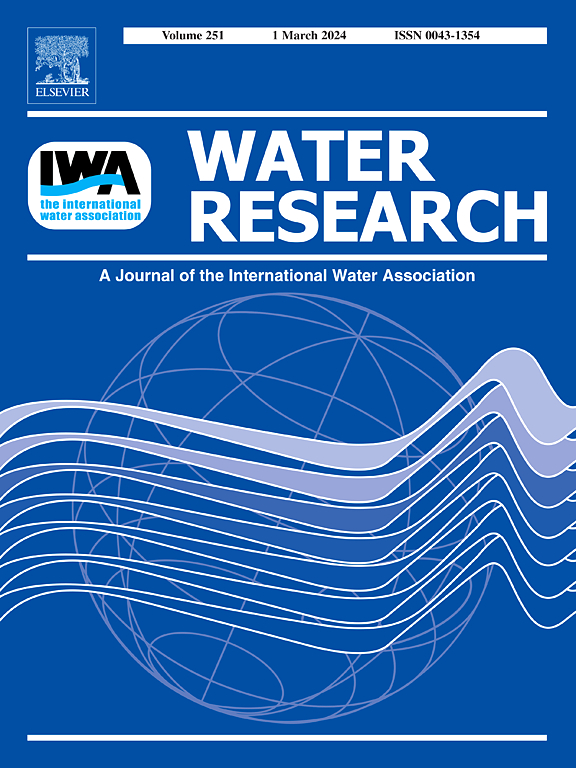Electron beam irradiation technology: A new frontier in environmental pollution control
IF 12.4
1区 环境科学与生态学
Q1 ENGINEERING, ENVIRONMENTAL
引用次数: 0
Abstract
With the worsening global environmental pollution, traditional pollution control methods face numerous challenges in terms of efficiency, cost and sustainability. As an emerging, efficient and eco-friendly technology, electron beam irradiation technology (EBIT) has attracted increasing attention from both academia and industry in recent years. This review systematically introduces the fundamental principles of EBIT and its primary applications in environmental pollution control, with a focus on recent research progress in wastewater treatment, air purification, solid waste degradation and heavy metal removal. EBIT offers significant advantages, including rapid reactions, easy operation and environmental friendliness. By utilizing the ionization and excitation effects induced by high-energy electron beams, this technology effectively degrades organic pollutants, removes heavy metal ions and inactivates harmful pathogenic microorganisms. Furthermore, this paper provides an in-depth analysis of the major challenges hindering the practical application of EBIT, such as high equipment costs, insufficient technological maturity, and limitations in large-scale implementation. Future research directions are also proposed to address these challenges. Through this review, readers can gain a comprehensive understanding of the significant value of EBIT in environmental protection, providing insights for its further development and practical application. Ultimately, this work aims to contribute to ecological improvement and sustainable development.


电子束辐照技术:环境污染控制的新前沿
随着全球环境污染的日益严重,传统的污染控制方法在效率、成本和可持续性方面面临着诸多挑战。电子束辐照技术作为一种新兴的、高效的、环保的技术,近年来越来越受到学术界和工业界的关注。本文系统介绍了息税前利润的基本原理及其在环境污染控制中的主要应用,重点介绍了近年来息税前利润在废水处理、空气净化、固体废物降解和重金属去除等方面的研究进展。息税前利润具有反应迅速、操作简便、环境友好等显著优势。该技术利用高能电子束诱导的电离和激发效应,有效降解有机污染物,去除重金属离子,灭活有害病原微生物。此外,本文还深入分析了阻碍息税前利润实际应用的主要挑战,如设备成本高、技术成熟度不足、大规模实施的局限性等。针对这些挑战,提出了未来的研究方向。通过本文的回顾,读者可以全面了解息税前利润在环境保护中的重要价值,为其进一步发展和实际应用提供见解。这项工作的最终目的是促进生态改善和可持续发展。
本文章由计算机程序翻译,如有差异,请以英文原文为准。
求助全文
约1分钟内获得全文
求助全文
来源期刊

Water Research
环境科学-工程:环境
CiteScore
20.80
自引率
9.40%
发文量
1307
审稿时长
38 days
期刊介绍:
Water Research, along with its open access companion journal Water Research X, serves as a platform for publishing original research papers covering various aspects of the science and technology related to the anthropogenic water cycle, water quality, and its management worldwide. The audience targeted by the journal comprises biologists, chemical engineers, chemists, civil engineers, environmental engineers, limnologists, and microbiologists. The scope of the journal include:
•Treatment processes for water and wastewaters (municipal, agricultural, industrial, and on-site treatment), including resource recovery and residuals management;
•Urban hydrology including sewer systems, stormwater management, and green infrastructure;
•Drinking water treatment and distribution;
•Potable and non-potable water reuse;
•Sanitation, public health, and risk assessment;
•Anaerobic digestion, solid and hazardous waste management, including source characterization and the effects and control of leachates and gaseous emissions;
•Contaminants (chemical, microbial, anthropogenic particles such as nanoparticles or microplastics) and related water quality sensing, monitoring, fate, and assessment;
•Anthropogenic impacts on inland, tidal, coastal and urban waters, focusing on surface and ground waters, and point and non-point sources of pollution;
•Environmental restoration, linked to surface water, groundwater and groundwater remediation;
•Analysis of the interfaces between sediments and water, and between water and atmosphere, focusing specifically on anthropogenic impacts;
•Mathematical modelling, systems analysis, machine learning, and beneficial use of big data related to the anthropogenic water cycle;
•Socio-economic, policy, and regulations studies.
 求助内容:
求助内容: 应助结果提醒方式:
应助结果提醒方式:


